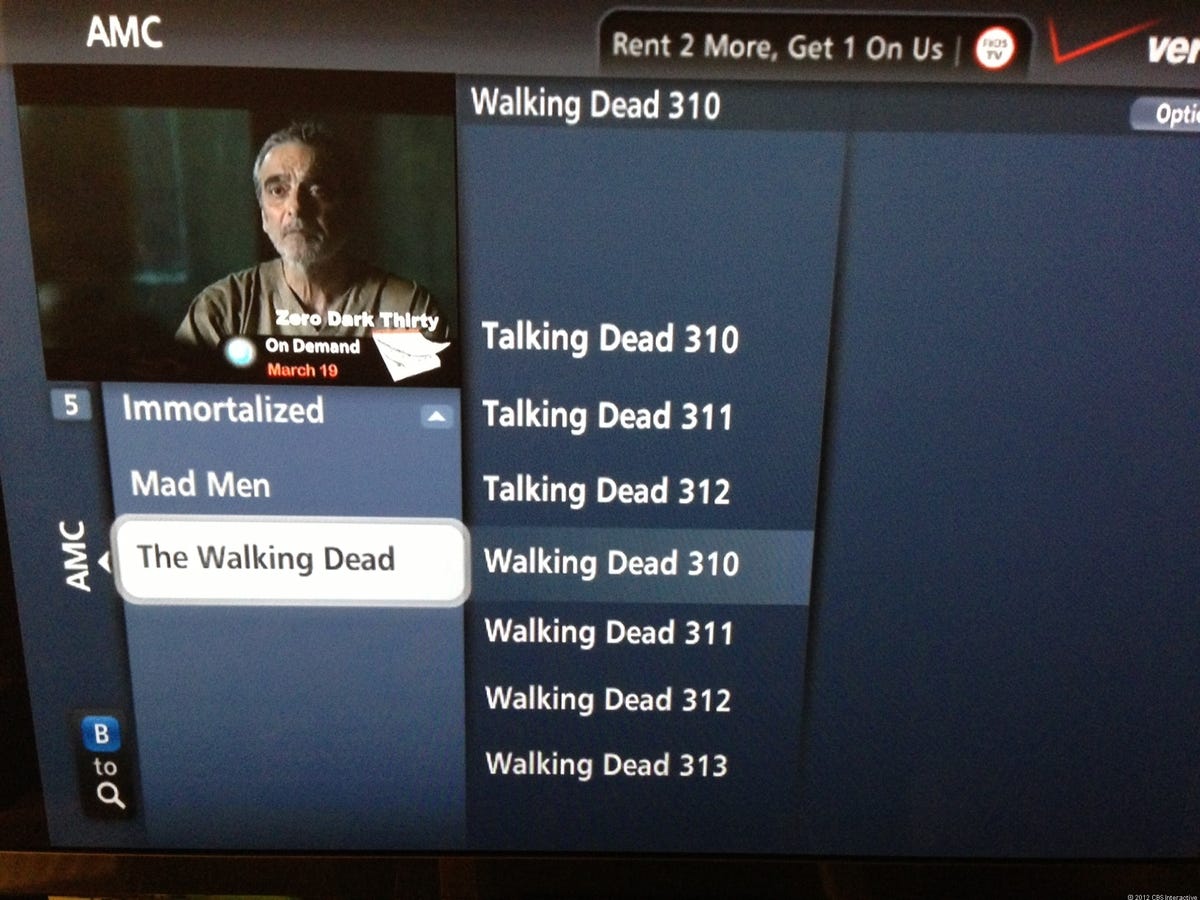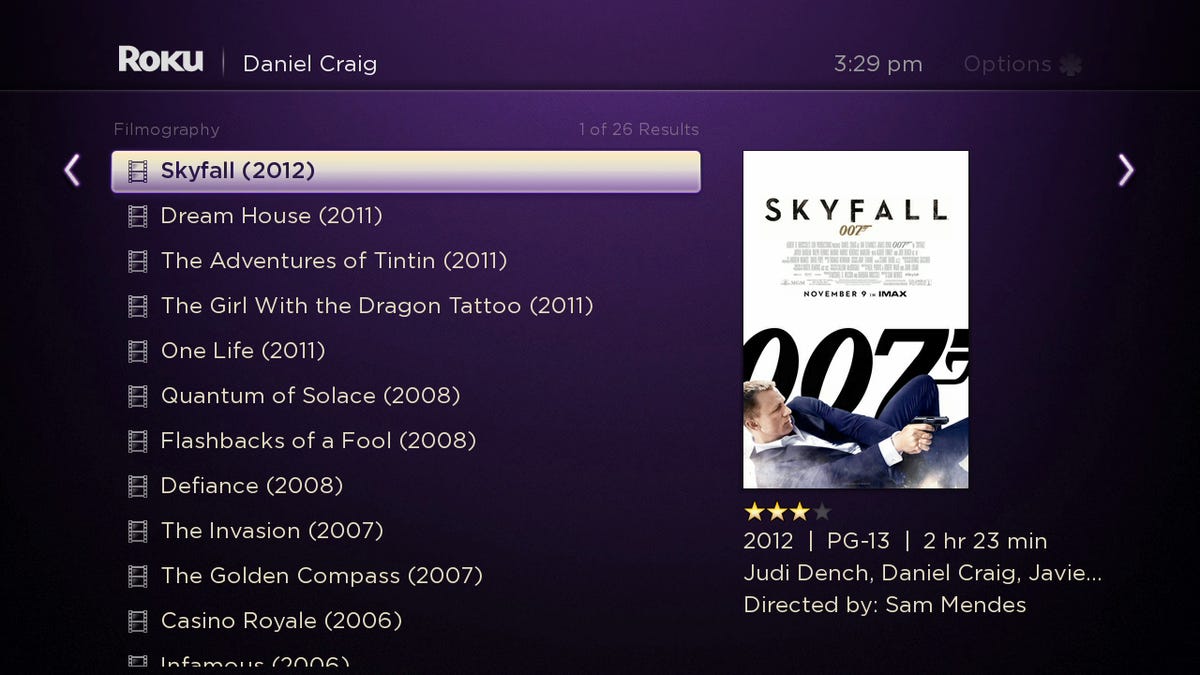I cut the cord years ago. My wife sat across from me on the sofa and finally convinced me that paying well over $100 a month for the privilege of a bunch of random cable channels wasn’t worth it. We could save money, learn to live lower to the ground, read more, and watch TV shows and movies on demand. Netflix, Hulu Plus, and iTunes. I agreed. With apprehension.
It worked. We relaxed, we used an over-the-air antenna, we caught our TV shows on broadcast networks and just sat through commercials. I even borrowed an old DTV Pal DVR that could record antenna shows, so I could have a flexible viewing schedule.
I learned to love my limited life. Apps like Netflix and Hulu Plus — say what you will about their content limitations — are far prettier and easier to access than the typical pay-TV service. I indulged in the occasional digital rentals. I used my Xbox 360 as a streaming hub and power-used Bing.
Then, I moved.
The offer to upgrade to a local Fios service was tempting. It started with faster Internet, and then when I saw the total cable package offering with Internet, I thought to myself: I’m saving money on rent now that I live in the suburbs. I do TV appearances occasionally, and while I was in cut-the-cord mode, I often couldn’t see my own appearances. Why not indulge?
So, I went back on the cable grid.
It’s been six months now. And I’ve realized something: my cut cord hasn’t really mended. I feel like I’ve been living in the future and have been sent back to a messy past. I’m now somewhere between. I still find myself gravitating to apps like Netflix instead of my Fios box. My cord’s still half-cut. Here’s why, and what I want to see fixed.
(Disclosure: CNET is a division of CBS. CBS also owns several cable networks, including Showtime, and has a 50 percent interest in the CW broadcast network.)


Scott Stein/CNET
Clean up the terrible cable UI
The Fios interface and remote are horrible. Delays and odd, labyrinthine menus are everywhere. The graphic design feels stolen from a dial-up ISP in 1997. I can never really find what’s available. The endless menus of channel lineups are a joke.
It’s no surprise at all that people are rooting for an Apple TV-type product to succeed. Right now, cable boxes feel like early smartphones back in the day when cellular providers sold “apps” directly through their own ugly storefronts. I’d love to see an intelligent company reskin the TV experience and make it work better. That’s what TiVo originally was, and in its heyday it was brilliant. But today, I find TiVo just as antiquated. I’d rather browse my Xbox 360 or my iPad and suffer a disconnect to live TV content, than deal with the annoying, slow-to-load grids and menus I have to deal with on cable.


Scott Stein/CNET
Clean up the patchy back catalog of recent episodes Yes, I know that’s not really your fault, Big Cable. That’s each network’s decision as far as what ends up being offered on-demand, versus being licensed to services like Netflix or being sold per-episode on iTunes, Amazon, and the like.
That’s fine, but there’s a frustrating, illogical gap in the entertainment catalog that still ends up happening every time I try to catch up with a series.
I still use Netflix and Hulu Plus, and I love the hell out of HBO Go. I go to these services and avoid Fios at all unless I absolutely have to use it. Once I’ve caught up on back seasons, then it’s time to go to my cable — where on-demand programming is listed as a series of text menus. Once I dig down, I find more often than not that those precious current seasons of shows I can’t get via Netflix or sometimes even iTunes are doled out in little bundles of three to five episodes, and that’s it. Even worse, these episodes are often completely cryptically labeled.
Occasionally there’s more, but it’s like opening a bunch of old boxes hoping for a piece of chocolate and half the time finding a dead rat.
Do I need to be sent back to iTunes to complete my catalog when I’m already paying well over $100 a month? Why can’t current seasons be included in the effective cost of subscribing to cable? Premium channels like HBO and Showtime offer back catalogs, but “non-premium” channels don’t. But if those channels want us watching their shows, it’s in their best interest to fix that equation.
If I’m caught up on a show, I’ll watch regularly. This appears to be the conventional wisdom now. You want me to do this. I can’t just program my DVR because I simply run out of room. Don’t make me play that game, because the answer to that puzzle, currently, is I simply stop watching your show and wait for the season to hit Netflix.


Matthew Moskovciak/CNET
Let’s have better cross-platform searchI’ve been groomed on more elegant catch-all solutions via my iPad and its apps: Fanhattan, which pools together all streaming services, the TV Guide app, or Next Guide. All I have to do is speak out to Bing on my Xbox-connected Kinect or type it in to the Roku universal search app, and it finds what shows I want. Roku, meanwhile, has amped up its built-in search app, allowing users to search for content on Netflix, Hulu Plus, Amazon, Crackle, Vudu, and HBO Go through one simple interface.
Compare that with Fios, which has a wide library of content, but it’s buried in weird menus and a grid that makes lousy use of a whole TV screen.


Roku
I don’t just want better, easier in-cable-box search; I want the true holy grail, the cross-services search that lets me know whether a show is on a channel I’m paying for, on demand, or on any of the galaxy of other app services like Netflix. At CES, pretty much all of the major TV companies demonstrated some form of this universal search: Samsung, LG, Panasonic, and others. Even Nintendo has been trying to do something similar via the Wii U’s TVii.
We have yet to formally test the 2013 smart TV apps because the products are just now beginning to hit retail. But the bottleneck to most of these search services is usually accessing the DVR and its recorded content. That’s generally treated like an inaccessible dead end. That may make sense if you accept that search is usually intended to find new shows to watch/record, but it doesn’t make sense as a way to build a hub around shows you watch.
Speaking of which:
On-demand content and DVRs should work together seamlesslyThe DVR: great in concept, but increasingly frustrating in reality.
I hate DVRs. My Verizon-loaned piece of junk has a ridiculously low amount of onboard storage. It maxes out seemingly every day. So, my son’s shows and my wife’s shows are on there, and…I’ve learned to watch and erase the few shows I record quickly, or not see them at all.
What am I paying for? Beyond the occasional must-see sports, news, and award shows, live TV is something of a rarity for me — hardly worth a premium. If I’m paying for the option to record everything, then it’s the illusion of freedom. I pay my cable TV tax and do it automatically. If I don’t record my shows because I’ve run out of space, then that’s where on-demand streaming access should help. Otherwise, I’m really paying for nothing. I know cable companies are in the business of selling extra-large DVRs, but it’s an old-fashioned concept in a cloud-streaming world. Help me watch these shows.
HBO Go remains the optimal model: every back episode of every series available on-demand, and new episodes available the same hour — if not before — they air on TV. I should get HBO Go on my DVR box (yes, HBO On Demand exists on my existing DVR, but it’s not as good, nor as usable). I should be able to access these on-demand app pages as an interconnected experience with the channel itself.
In a perfect world for consumers, this would be the experience for all channels and program providers. OK, though, we don’t live in a perfect world — TV networks aren’t going to give away the goose when they can parcel out the golden eggs for profit. So — and I know I sound like a broken record here — at least give us back episodes from the full current season, not just the last three or so. And then I can use that new supersearch function (see above) to find the previous seasons on Amazon, Netflix, Hulu Plus, and elsewhere. Win win.
One can even envision a world in which the DVR goes away. After all, if you can get everything on-demand, everything in the cloud, why have a giant hard drive full of local programs anyway?


John Falcone/CNET
Turn the cable box into an app — a good one
The “TV everywhere” apps are as mixed a bag as you can get. The Verizon Fios and Comcast Xfinity apps have long been available on Xbox 360 (and some other smart TV platforms), but it just doesn’t re-create the cable TV experience. They’re better than nothing, but they only stream several dozen channels. In other words, they can’t double as a full-on cable box.
The new Time Warner app for Roku, on the other hand, is a huge step forward. That app streams more than 200 live TV channels, effectively turning the Roku into a cable box replacement. That said, it falls short of the TWC app for iOS, which also includes an onscreen program guide and access to a wide range of on-demand content.
Or take Aereo. The upstart TV service “rents” tiny antennas at a remote facility to users, who can use them to stream live over-the-air channels. It also lets users record programs “in the cloud” for later playback. The service works on iOS devices, Web browsers, and even on a Roku (via an unsupported private channel). Unlike cable and satellite providers, Aereo doesn’t pay a retransmission fee to the broadcasters — which is why they’re suing Aereo. (That list of plaintiffs includes CNET owner CBS.)
The point is, apps are channels, and channels are apps. And, once again, HBO Go has been spoiling me. That’s how I want my content made available to me: instantly, beautifully, across multiple platforms, and with minimal hassle. I pay my tiered cable-tax fee, and I get that service. It makes paying for HBO feel more special. Showtime has an app, too, that works similarly. So does Cinemax.
Let’s just agree that all TV is becoming subscription TV. Whether it’s HBO, Showtime, or non-premium channels, you’re paying for a package one way or another. All paid-for content should have robust app support. I subscribe to a magazine and I can get the digital version for free; to me, paid cable content should offer similar perks for on-demand access.
The new cable box is already here — just let it happen
The cable industry needs to Roku-ify itself, become more like the Apple TV and iPad, adopt the best ideas on the Xbox 360. The Wii U, the iPad, the Xbox, smart TVs, Roku, Slingbox: they’re all evolving what TV is becoming. Cable and all the associated channels need to relax and let it happen. I’m still willing to pay for content, but I want it to perform the way a modern service should.
If it doesn’t, I’ll just cut the cord again — this time for good.




